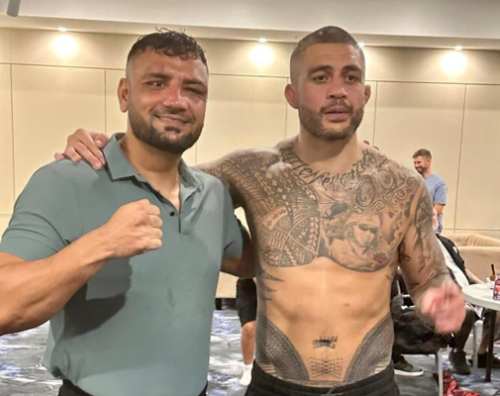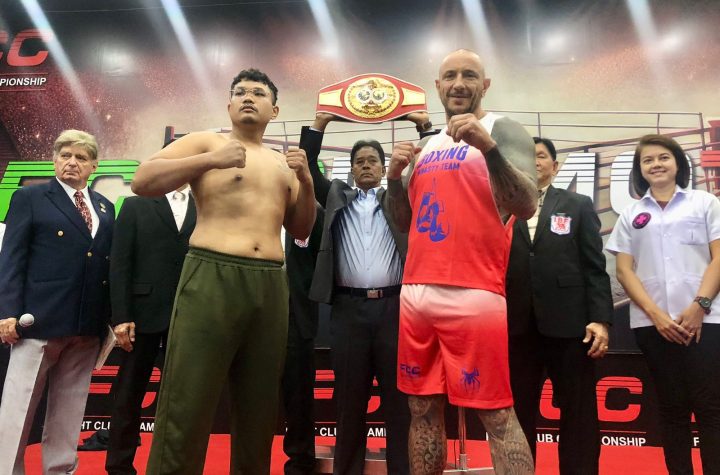
By Marc Raimondi@marc_raimondi
MMAfighting.com
Tom Lawlor might have been the victim of bad timing, according to the UFC’s anti-doping partner.
The former UFC fighter was suspended two years by USADA for testing positive for the prohibited substance ostarine in February 2017. He was eligible to return in October 2018, but was released by the UFC prior to getting that opportunity.
Lawlor’s case has come up again this week, following the announcement that four UFC fighters were suspended just six months for testing positive for ostarine. The four cases — involving Sean O’Malley, Nicco Montaño, Augusto Mendes and Marvin Vettori — were not dissimilar to Lawlor’s situation: trace amounts of the substance that has rather frequently been found in tainted dietary supplements.
“Filthy” Tom Lawlor
Hello @usantidoping can you please explain the difference between the 4 recent cases of @ufc fighters being given 6 months for ostarine while I was sanctioned for 2 years? I’d like to believe in fairness by your organization but I would like some clarity please.1,0549:37 PM – Apr 25, 2019Twitter Ads info and privacy272 people are talking about this
Lawlor was not able to prove through testing that one of the supplements he was taking was contaminated with ostarine. That is why he was handed the two-year suspension. None of the four aforementioned fighters who got their bans this week were able to prove that either, yet USADA reduced their suspensions anyway, citing an evolution in the science.
In a statement sent to MMA Fighting on Thursday, USADA communications director Adam Woullard wrote that lab testing is “more sensitive and able to detect far smaller quantities and new metabolites of PEDs than even just a few years ago,” which can lead to more “intentional cheats” being caught, but also “some inadvertent positives,” like via supplement contamination.
Woullard wrote that if Lawlor’s ostarine case happened in 2019, it’s possible he would have been eligible for a shorter suspension length and “would have the ability to challenge to an independent arbitrator to determine the final consequence.” But his two-year suspension was the “standard sanction at the time,” Woullard wrote.
“An effective and just anti-doping program should always evolve to best protect clean athletes and to evaluate the facts and science for each individual athlete and fairly sanction intentional dopers,” Woullard wrote. “Today, laboratory testing is more sensitive and able to detect far smaller quantities and new metabolites of PEDs than even just a few years ago, which is great for detecting intentional cheats because of longer detection windows, but on the flip side may also mean some inadvertent positives such as through product contamination are found.
“While the facts in Lawlor are similar but not necessarily identical to the ostarine cases announced this week, he received the standard sanction at the time for his violation announced in 2017. If his case arose today, he might have been eligible for a lower sanction and would have the ability to challenge to an independent arbitrator to determine the final consequence.”
This is not as much of a policy change for USADA, Woullard said, rather the agency just looking at each UFC anti-doping case individually and applying the science and standard available at the time. Essentially, USADA is saying that it is easier to tell by analysis in 2019 when ostarine is likely ingested via a contaminated supplement than it was in 2017.
In the release announcing the four six-month suspensions earlier this week, USADA wrote that “as detection windows increase and the potential time between ingestion and detection lengthens, it has become more difficult for athletes to identify a contaminated product that may be the source of the positive test.”
Lawlor told MMA Fighting on Thursday that he was advised by UFC vice president of athlete health and performance Jeff Novitzky and USADA not to go to arbitration, because he wasn’t able to come up with the supplement he took that led to the positive.
“Perhaps the science and testing should be solidified first before people’s livelihoods are put at stake and people are unjustly punished,” Lawlor said.
Lawlor, 35, has fought just once since his USADA suspension, a loss to Deron Winn on the Liddell vs. Ortiz 3 card promoted last November by Golden Boy. He has, though, found success and popularity on the independent pro-wrestling scene and is the current Major League Wrestling world heavyweight champion.
In the four years that USADA has run the UFC’s anti-doping program, 14 fighters have tested positive for ostarine. Of those 14, six have received suspensions of six months in length. Another four — Lawlor, Zubaira Tukhugov, Ruslan Magomedov and Amanda Ribas — got two years. Diego Ferreira was suspended 17 months, Guido Cannetti got 10 months and Jim Wallhead got nine months. Lastly, Josh Barnett got just a public reprimand after arbitration.





More News
Unconscionable Betrayal: Tyson Pedro Camp’s Shameful Swindling of Taimoor Khan
Casimero TKO’s Sanchez in 1st round
Raquinel wins WBC Continental Americas super flyweight title